Are genital warts for life. Genital Warts: Duration, Treatment, and Long-Term Outlook
How long do genital warts typically last. What are the most effective treatments for genital warts. Can genital warts be cured permanently. What factors influence the duration of genital warts. How can you prevent genital warts from recurring.
Understanding Genital Warts: Causes and Characteristics
Genital warts are a common sexually transmitted infection caused by certain strains of the human papillomavirus (HPV). These soft, flesh-colored growths typically appear in the genital area and can vary in size and shape. While often described as cauliflower-like, their appearance can differ from person to person.
HPV is incredibly prevalent, with the World Health Organization (WHO) reporting it as the most common viral sexually transmitted disease globally. In the United States alone, millions of new infections occur each year, highlighting the importance of understanding this condition.
What causes genital warts?
Genital warts are caused by specific types of HPV, most commonly types 6 and 11. These strains are considered low-risk, meaning they rarely lead to cancer. However, it’s important to note that a person can be infected with multiple HPV strains simultaneously, including high-risk types associated with cervical and other cancers.

The Lifecycle of Genital Warts: From Infection to Outbreak
Understanding the timeline of genital warts can help individuals better manage their condition and seek appropriate treatment. The process from infection to visible symptoms can vary significantly among individuals.
How long does it take for genital warts to appear after infection?
The incubation period for genital warts can range from a few weeks to several months or even years. In some cases, people may carry the virus without ever developing visible warts. This variability makes it challenging to determine exactly when the infection occurred, especially in cases of delayed symptom onset.
- Typical incubation period: 2-3 months
- Possible range: 2 weeks to several years
- Some individuals may never develop visible warts
Duration and Persistence of Genital Warts
One of the most common questions individuals have about genital warts is how long they last. The duration can vary significantly based on several factors, including the individual’s immune system, the specific HPV strain, and whether treatment is sought.

Do genital warts go away on their own?
In many cases, genital warts can resolve without medical intervention. The World Health Organization reports that approximately 90% of HPV infections clear within two years. However, this doesn’t mean the virus is completely eliminated from the body. In some individuals, the virus may become latent, potentially leading to future outbreaks.
Factors that may influence the duration of genital warts include:
- Strength of the individual’s immune system
- Specific HPV strain causing the warts
- Presence of other sexually transmitted infections
- Lifestyle factors such as smoking and alcohol consumption
- Overall health and stress levels
Treatment Options for Genital Warts
While genital warts may resolve on their own, many individuals seek treatment to alleviate symptoms, reduce the risk of transmission, and potentially shorten the duration of the outbreak. Several treatment options are available, each with its own benefits and considerations.
What are the most effective treatments for genital warts?
Treatment effectiveness can vary depending on the individual and the specific characteristics of their warts. Common treatment options include:

- Topical medications: Prescription creams such as imiquimod, podofilox, and sinecatechins can be applied directly to the warts.
- Cryotherapy: Freezing the warts with liquid nitrogen.
- Electrocautery: Burning off the warts with an electrical current.
- Surgical excision: Cutting out the warts under local anesthesia.
- Laser therapy: Using laser light to destroy the wart tissue.
It’s important to note that while these treatments can remove visible warts, they do not cure the underlying HPV infection. This means that warts may recur even after successful treatment.
Long-Term Outlook and Recurrence Risk
Understanding the long-term implications of genital warts is crucial for individuals managing this condition. While many people will clear the infection and experience no further outbreaks, others may face recurring symptoms.
Can genital warts come back after treatment?
Yes, genital warts can recur after treatment. This is because current treatments target the visible warts but not the underlying HPV infection. The virus may remain dormant in the body, potentially leading to future outbreaks. However, many individuals will experience fewer and less severe recurrences over time as their immune system learns to control the virus more effectively.

A study published in December 2017 provided insights into the recurrence risk of HPV infections. The research, which focused on unvaccinated men between 18 and 70 years old, found that:
- An initial HPV infection significantly increases the risk of future infection by the same strain.
- For HPV strain 16 (a high-risk type), the one-year probability of reinfection was 20 times higher in those previously infected.
- The increased risk of reinfection persisted even two years later, remaining 14 times higher.
- This elevated risk was observed regardless of sexual activity, suggesting potential viral latency or spread to different body parts.
Prevention Strategies and Risk Reduction
While genital warts can be challenging to prevent entirely, several strategies can help reduce the risk of infection and recurrence.
How can you lower your risk of contracting or spreading genital warts?
The Centers for Disease Control and Prevention (CDC) recommends several approaches to reduce the risk of HPV infection and genital warts:
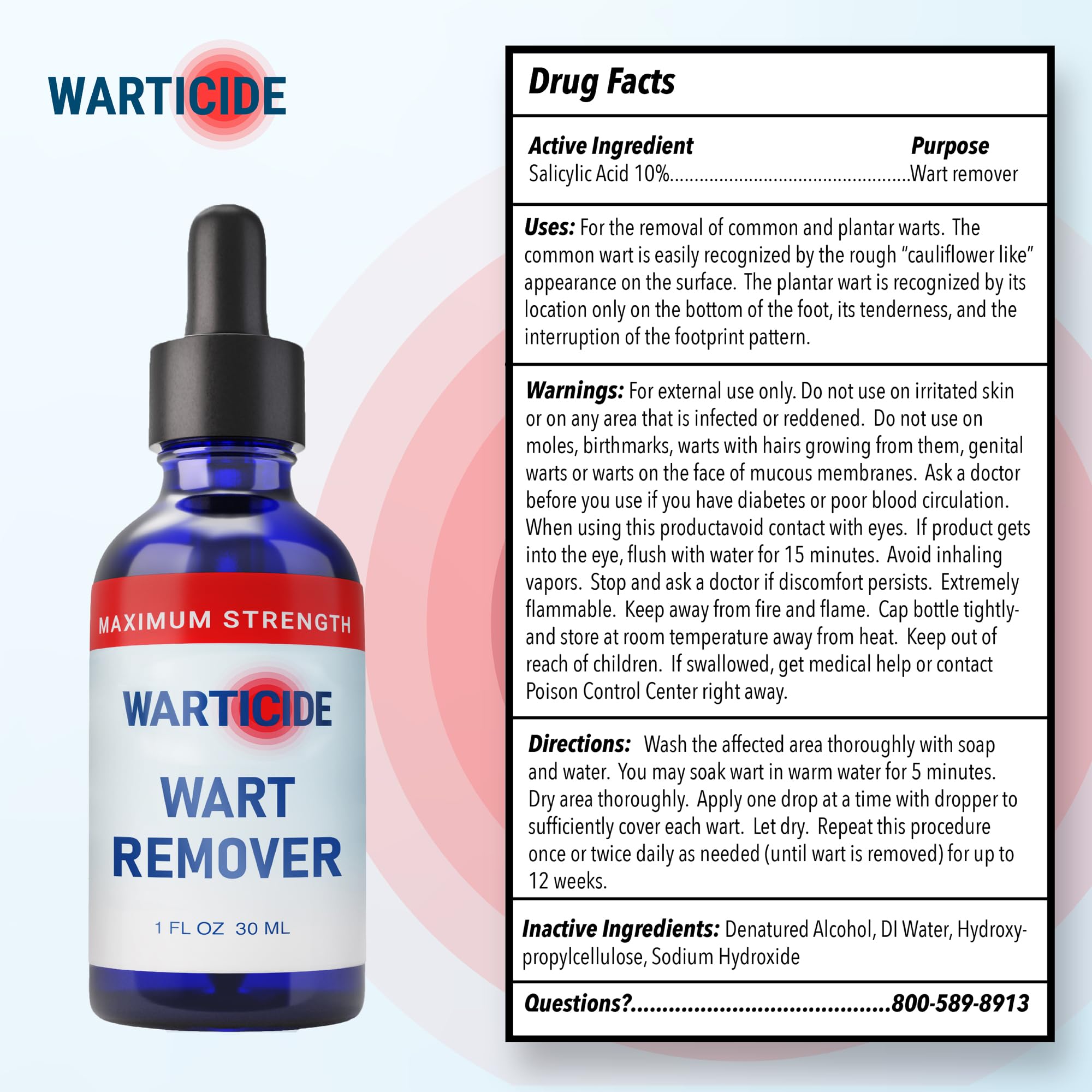
- Vaccination: HPV vaccines can protect against the most common strains causing genital warts and HPV-related cancers.
- Safe sex practices: Using condoms and dental dams can reduce (but not eliminate) the risk of transmission.
- Limiting sexual partners: Fewer partners may decrease exposure to different HPV strains.
- Regular screenings: For those at risk, regular cervical cancer screenings can detect precancerous changes early.
- Open communication: Discussing sexual health with partners can help inform decision-making.
It’s important to note that while these measures can significantly reduce risk, they cannot provide complete protection against HPV infection.
Living with Genital Warts: Psychological and Social Impacts
Beyond the physical symptoms, genital warts can have significant psychological and social impacts on those affected. Understanding and addressing these aspects is crucial for comprehensive care.
How do genital warts affect mental health and relationships?
The diagnosis and management of genital warts can lead to various emotional and social challenges, including:
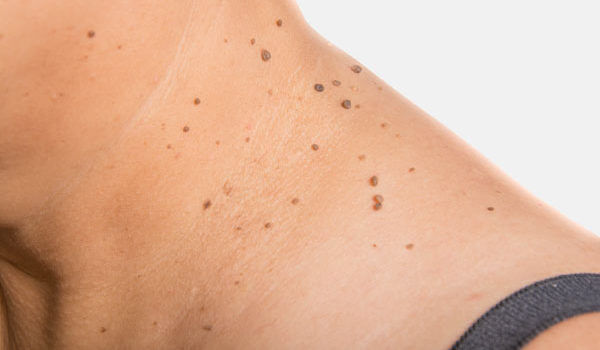
- Anxiety and depression related to the diagnosis and potential recurrences
- Feelings of shame or embarrassment
- Concerns about disclosure to sexual partners
- Impact on self-esteem and body image
- Stress related to treatment and follow-up care
Support from healthcare providers, counselors, and support groups can be invaluable in addressing these challenges. Open communication with partners and accurate information about the condition can also help alleviate concerns and foster understanding.
Advances in Research and Future Perspectives
Ongoing research into HPV and genital warts continues to expand our understanding of the condition and improve treatment options. Recent advancements and future directions include:
What new treatments or preventive measures are being developed for genital warts?
Several promising areas of research are currently being explored:
- Improved vaccine formulations to cover a broader range of HPV types
- Therapeutic vaccines to treat existing HPV infections
- Novel antiviral treatments targeting the HPV lifecycle
- Immunomodulatory therapies to enhance the body’s natural defense against the virus
- Advanced diagnostic tools for earlier detection of high-risk HPV infections
These developments hold the potential to revolutionize the prevention and treatment of genital warts and other HPV-related conditions in the coming years.

Conclusion and Key Takeaways
Genital warts, caused by certain strains of HPV, present a complex health challenge that affects millions worldwide. While often not life-threatening, they can significantly impact an individual’s physical and emotional well-being. Key points to remember include:
- Genital warts are highly treatable, but the underlying HPV infection may persist.
- Most HPV infections clear within two years, but some may become chronic or latent.
- Treatment options range from topical medications to surgical interventions.
- Recurrence is possible, even after successful treatment.
- Prevention strategies include vaccination, safe sex practices, and regular health screenings.
- The psychological impact of genital warts should not be overlooked.
- Ongoing research offers hope for improved prevention and treatment options in the future.
By understanding the nature of genital warts, individuals can make informed decisions about their health, seek appropriate care, and take steps to reduce their risk of infection or recurrence. As with any health concern, consulting with healthcare professionals for personalized advice and treatment is essential.
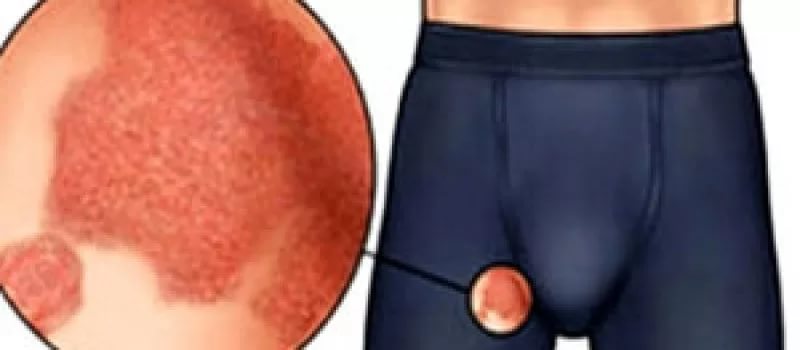
How Long Do Genital Warts Last?
What are genital warts?
If you’ve noticed soft pink or flesh-colored bumps around your genital area, you may be going through a genital warts outbreak.
Genital warts are cauliflower-like growths caused by certain types of the human papillomavirus (HPV). HPV is the most common viral sexually transmitted disease in the United States.
Although HPV isn’t curable in all cases, genital warts are treatable. You can also go extended periods of time without an outbreak, but it may not be possible to get rid of the warts forever.
That’s because genital warts are only a symptom of HPV, which may become a chronic, lifelong infection for some.
For those who clear the HPV infection, there is a chance of contracting an infection from the same strain or a different one. You could even contract an infection of multiple strains at the same time, though this is less common.
So even with treatment, genital warts may come back in the future. This depends on whether you’ve been vaccinated, how well your immune system is functioning, the strain of HPV you have, and the amount of virus you have (viral load).
This depends on whether you’ve been vaccinated, how well your immune system is functioning, the strain of HPV you have, and the amount of virus you have (viral load).
Some strains are high risk and associated with later formation of squamous cell carcinoma (cancer), and you may not even know if you have a high-risk HPV strain until precancerous or cancerous lesions form.
Some research shows that HPV infections persist latently in 10 to 20 percent of those who contract them, as opposed to the 80 to 90 percent who clear the virus within two years of infection. According to the World Health Organization (WHO), about 90 percent of HPV infections clear within two years.
However, certain factors increase the risk of the infection not going away. These include having sex without protection, contracting other sexually transmitted infections (STIs), alcohol use, smoking tobacco, and having a suppressed immune system.
A recent study published in December 2017 noted that over 200 genetically distinct strains of HPV exist. The study looked at HPV infection in unvaccinated men between the ages of 18 and 70. Researchers tracked over 4,100 subjects over five years.
The study looked at HPV infection in unvaccinated men between the ages of 18 and 70. Researchers tracked over 4,100 subjects over five years.
What the study found was that HPV infection strongly increases the risk of future infection by the same strain.
The researchers focused on strain 16, which is responsible for most HPV-related cancers. They noted that an initial infection increases the one year probability of reinfection by a factor of 20, and the probability of reinfection remains 14 times higher two years later.
The researchers found that this increased risk occurs in men regardless of whether they are sexually active. This suggests reinfection arises from the virus spreading to different parts of the body, reactivation of latent virus (that is, virus that’s still inside the body), or both.
There are ways to decrease the risk of contracting HPV, however.
According to the Centers for Disease Control and Prevention (CDC), the most reliable way to prevent HPV infection is to abstain from sexual activity. The CDC also suggests condom use and limiting the number of sexual partners as ways to lower risk of contracting an HPV infection. As well, the organization recommends vaccination at a younger age to help protect against the strains that cause the majority of warts and cancer.
The CDC also suggests condom use and limiting the number of sexual partners as ways to lower risk of contracting an HPV infection. As well, the organization recommends vaccination at a younger age to help protect against the strains that cause the majority of warts and cancer.
HPV symptoms take a while to show, so warts may not appear until weeks or months after infection. In some cases, genital warts can take years to develop.
Outbreaks can happen in or around the vagina or anus, on the cervix, in the groin or thigh area, or on the penis or scrotum. HPV can also cause warts on your throat, tongue, mouth, or lips.
For some people, genital warts may clear up on their own within two years, but treatment helps speed up the process.
Treatment can also prevent possible health complications caused by HPV, as well as:
- ease pain, itching, and irritation
- potentially lower the risk of spreading HPV
- get rid of warts that are hard to keep clean
Genital warts can be treated by a doctor in a number of ways. Topical treatments, prescription medications, and minor procedures can help clear up an outbreak.
Topical treatments, prescription medications, and minor procedures can help clear up an outbreak.
Topicals
Over-the-counter wart removers won’t work on genital warts and may cause more discomfort. Genital warts require a special type of topical treatment that your doctor can. Those creams include:
Podofilox
Podofilox is a plant-based cream used to treat external genital warts and stop wart cells from growing. You should apply podofilox to the wart tissue at least twice daily for three days, then let the area rest for the remainder of the week.
You may need to repeat this treatment cycle four times.
Podofilox is one of the more effective topical creams in clearing warts. According to one study, outbreaks in nearly half of the people using the cream improved by 50 percent or more. Twenty-nine percent of participants saw their warts clear completely.
But like all medication, podofilox does come with side effects, including:
- burning
- pain
- inflammation
- itching
- sores
- blistering, crusting, or scabbing
Imiquimod
Imiquimod is a prescription cream that’s used to destroy external genital warts, as well as certain skin cancers. You should apply the ointment directly to the warts at least three days a week for about four months.
You should apply the ointment directly to the warts at least three days a week for about four months.
Although imiquimod may not be effective for everyone, one study did show that warts cleared in 37 to 50 percent of people using the cream. The medicine can also boost your immune system to fight HPV.
Side effects of imiquimod include:
- redness
- swelling
- burning
- itching
- tenderness
- scabbing and flaking
Sinecatechins
Sinecatechins is a cream made from green tea extract that’s used to clear up external genital and anal warts. You should apply the ointment three times per day for up to four months.
Sinecatechins may be the most effective topical for getting rid of warts. According to one study, the ointment cleared up warts in 56 to 57 percent of participants.
Side effects of sinecatechins are similar to other topical treatments. They include:
- burning
- pain
- discomfort
- itching
- redness
Cryotherapy
With cryotherapy, your doctor will remove the warts by freezing them with liquid nitrogen. A blister will form around each wart, which will shed once it heals.
A blister will form around each wart, which will shed once it heals.
Cryotherapy is effective in clearing outbreaks temporarily, but multiple treatments may be necessary to achieve long-term results.
You can go right back to your normal activities after the procedure, but expect a lot of watery discharge for up to three weeks as the area heals.
Side effects of cryotherapy include:
- pain
- swelling
- mild burning
Electrodessication
Electrodessication is a treatment that needs to be performed by a specialist. Your surgeon will use an electrical current to burn and destroy external genital warts, and then scrape away the dried tissue.
It’s considered to be a painful procedure, so you may be given a local anesthetic or go under general anesthesia.
Research has found the surgery to be highly effective. One study found that 94 percent of people who had six weekly sessions of electrodessication were clear of genital warts. Healing time takes four to six weeks.
Healing time takes four to six weeks.
Side effects include:
- bleeding
- infection
- scarring
- skin color changes of treated area
Laser surgery
Laser surgery is also a specialist procedure. Your surgeon uses a laser light to burn away wart tissue. You may require local or general anesthesia depending on the size and number of warts.
Laser surgery can be used to destroy large genital warts or hard-to-access warts that can’t be treated by other procedures. Recovery should take a few weeks.
Side effects include:
- pain
- soreness
- irritation
- bleeding
- scarring
Most HPV infections that cause genital warts will go away on their own, taking anywhere from a few months to two years. But even if your genital warts disappear without treatment, you may still have the virus.
When left untreated, genital warts can grow very large and in big clusters. They are also more likely to return.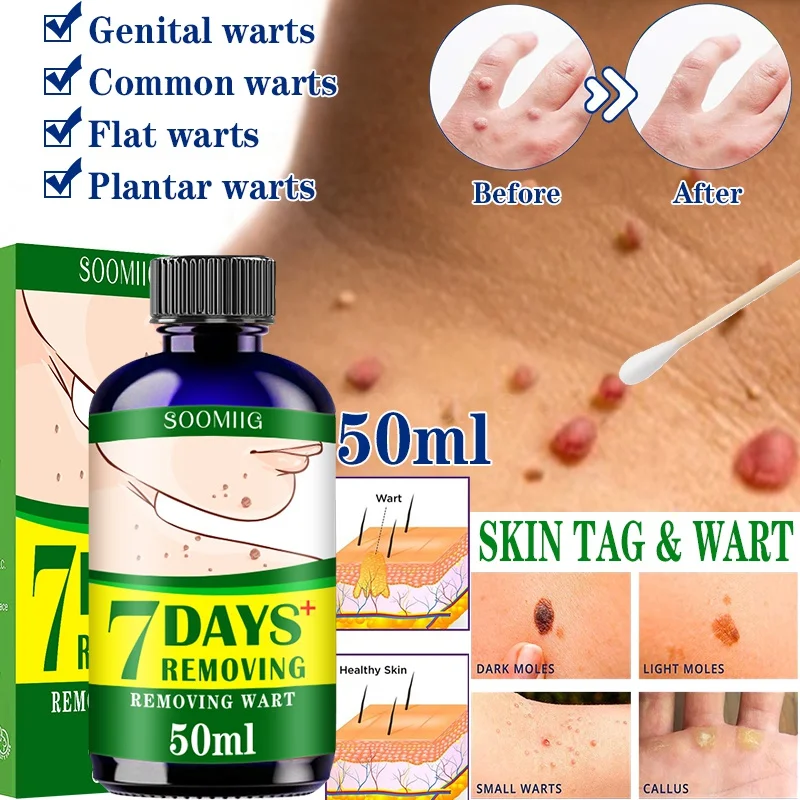
You should wait to have sex at least two weeks after your warts have cleared. You should also talk to your sexual partners about your HPV status before engaging in sexual activity.
Even if you aren’t dealing with an outbreak, you can still spread HPV through skin-to-skin contact. Wearing a condom will reduce your risk of transmitting HPV. This includes dental dams and male or female condoms.
Although genital warts may clear on their own, HPV may still be in your body. Treatment will help get rid of warts and reduce future outbreaks, though you may have to repeat treatments to clear warts completely.
It may take a few months to treat the warts, and you could go years without an outbreak. Make sure to wear a condom every time you have sex, as HPV can spread without warts present.
How Long Do Genital Warts Last?
What are genital warts?
If you’ve noticed soft pink or flesh-colored bumps around your genital area, you may be going through a genital warts outbreak.
Genital warts are cauliflower-like growths caused by certain types of the human papillomavirus (HPV). HPV is the most common viral sexually transmitted disease in the United States.
Although HPV isn’t curable in all cases, genital warts are treatable. You can also go extended periods of time without an outbreak, but it may not be possible to get rid of the warts forever.
That’s because genital warts are only a symptom of HPV, which may become a chronic, lifelong infection for some.
For those who clear the HPV infection, there is a chance of contracting an infection from the same strain or a different one. You could even contract an infection of multiple strains at the same time, though this is less common.
So even with treatment, genital warts may come back in the future. This depends on whether you’ve been vaccinated, how well your immune system is functioning, the strain of HPV you have, and the amount of virus you have (viral load).
Some strains are high risk and associated with later formation of squamous cell carcinoma (cancer), and you may not even know if you have a high-risk HPV strain until precancerous or cancerous lesions form.
Some research shows that HPV infections persist latently in 10 to 20 percent of those who contract them, as opposed to the 80 to 90 percent who clear the virus within two years of infection. According to the World Health Organization (WHO), about 90 percent of HPV infections clear within two years.
However, certain factors increase the risk of the infection not going away. These include having sex without protection, contracting other sexually transmitted infections (STIs), alcohol use, smoking tobacco, and having a suppressed immune system.
A recent study published in December 2017 noted that over 200 genetically distinct strains of HPV exist. The study looked at HPV infection in unvaccinated men between the ages of 18 and 70. Researchers tracked over 4,100 subjects over five years.
What the study found was that HPV infection strongly increases the risk of future infection by the same strain.
The researchers focused on strain 16, which is responsible for most HPV-related cancers. They noted that an initial infection increases the one year probability of reinfection by a factor of 20, and the probability of reinfection remains 14 times higher two years later.
They noted that an initial infection increases the one year probability of reinfection by a factor of 20, and the probability of reinfection remains 14 times higher two years later.
The researchers found that this increased risk occurs in men regardless of whether they are sexually active. This suggests reinfection arises from the virus spreading to different parts of the body, reactivation of latent virus (that is, virus that’s still inside the body), or both.
There are ways to decrease the risk of contracting HPV, however.
According to the Centers for Disease Control and Prevention (CDC), the most reliable way to prevent HPV infection is to abstain from sexual activity. The CDC also suggests condom use and limiting the number of sexual partners as ways to lower risk of contracting an HPV infection. As well, the organization recommends vaccination at a younger age to help protect against the strains that cause the majority of warts and cancer.
HPV symptoms take a while to show, so warts may not appear until weeks or months after infection. In some cases, genital warts can take years to develop.
In some cases, genital warts can take years to develop.
Outbreaks can happen in or around the vagina or anus, on the cervix, in the groin or thigh area, or on the penis or scrotum. HPV can also cause warts on your throat, tongue, mouth, or lips.
For some people, genital warts may clear up on their own within two years, but treatment helps speed up the process.
Treatment can also prevent possible health complications caused by HPV, as well as:
- ease pain, itching, and irritation
- potentially lower the risk of spreading HPV
- get rid of warts that are hard to keep clean
Genital warts can be treated by a doctor in a number of ways. Topical treatments, prescription medications, and minor procedures can help clear up an outbreak.
Topicals
Over-the-counter wart removers won’t work on genital warts and may cause more discomfort. Genital warts require a special type of topical treatment that your doctor can. Those creams include:
Podofilox
Podofilox is a plant-based cream used to treat external genital warts and stop wart cells from growing. You should apply podofilox to the wart tissue at least twice daily for three days, then let the area rest for the remainder of the week.
You should apply podofilox to the wart tissue at least twice daily for three days, then let the area rest for the remainder of the week.
You may need to repeat this treatment cycle four times.
Podofilox is one of the more effective topical creams in clearing warts. According to one study, outbreaks in nearly half of the people using the cream improved by 50 percent or more. Twenty-nine percent of participants saw their warts clear completely.
But like all medication, podofilox does come with side effects, including:
- burning
- pain
- inflammation
- itching
- sores
- blistering, crusting, or scabbing
Imiquimod
Imiquimod is a prescription cream that’s used to destroy external genital warts, as well as certain skin cancers. You should apply the ointment directly to the warts at least three days a week for about four months.
Although imiquimod may not be effective for everyone, one study did show that warts cleared in 37 to 50 percent of people using the cream. The medicine can also boost your immune system to fight HPV.
The medicine can also boost your immune system to fight HPV.
Side effects of imiquimod include:
- redness
- swelling
- burning
- itching
- tenderness
- scabbing and flaking
Sinecatechins
Sinecatechins is a cream made from green tea extract that’s used to clear up external genital and anal warts. You should apply the ointment three times per day for up to four months.
Sinecatechins may be the most effective topical for getting rid of warts. According to one study, the ointment cleared up warts in 56 to 57 percent of participants.
Side effects of sinecatechins are similar to other topical treatments. They include:
- burning
- pain
- discomfort
- itching
- redness
Cryotherapy
With cryotherapy, your doctor will remove the warts by freezing them with liquid nitrogen. A blister will form around each wart, which will shed once it heals.
Cryotherapy is effective in clearing outbreaks temporarily, but multiple treatments may be necessary to achieve long-term results.
You can go right back to your normal activities after the procedure, but expect a lot of watery discharge for up to three weeks as the area heals.
Side effects of cryotherapy include:
- pain
- swelling
- mild burning
Electrodessication
Electrodessication is a treatment that needs to be performed by a specialist. Your surgeon will use an electrical current to burn and destroy external genital warts, and then scrape away the dried tissue.
It’s considered to be a painful procedure, so you may be given a local anesthetic or go under general anesthesia.
Research has found the surgery to be highly effective. One study found that 94 percent of people who had six weekly sessions of electrodessication were clear of genital warts. Healing time takes four to six weeks.
Side effects include:
- bleeding
- infection
- scarring
- skin color changes of treated area
Laser surgery
Laser surgery is also a specialist procedure. Your surgeon uses a laser light to burn away wart tissue. You may require local or general anesthesia depending on the size and number of warts.
Your surgeon uses a laser light to burn away wart tissue. You may require local or general anesthesia depending on the size and number of warts.
Laser surgery can be used to destroy large genital warts or hard-to-access warts that can’t be treated by other procedures. Recovery should take a few weeks.
Side effects include:
- pain
- soreness
- irritation
- bleeding
- scarring
Most HPV infections that cause genital warts will go away on their own, taking anywhere from a few months to two years. But even if your genital warts disappear without treatment, you may still have the virus.
When left untreated, genital warts can grow very large and in big clusters. They are also more likely to return.
You should wait to have sex at least two weeks after your warts have cleared. You should also talk to your sexual partners about your HPV status before engaging in sexual activity.
Even if you aren’t dealing with an outbreak, you can still spread HPV through skin-to-skin contact. Wearing a condom will reduce your risk of transmitting HPV. This includes dental dams and male or female condoms.
Wearing a condom will reduce your risk of transmitting HPV. This includes dental dams and male or female condoms.
Although genital warts may clear on their own, HPV may still be in your body. Treatment will help get rid of warts and reduce future outbreaks, though you may have to repeat treatments to clear warts completely.
It may take a few months to treat the warts, and you could go years without an outbreak. Make sure to wear a condom every time you have sex, as HPV can spread without warts present.
Condylomas in men and women
Condylomas are formations that appear above the level of the skin in the anogenital region, against the background of papillomavirus infection, which has a low oncogenic risk. But there are cases when they carry an oncological threat, due to the ability to transform into a malignant tumor rather quickly.
It has been scientifically proven that cervical cancer, which is in second place among oncological pathologies, develops under the influence of certain types of papillomavirus.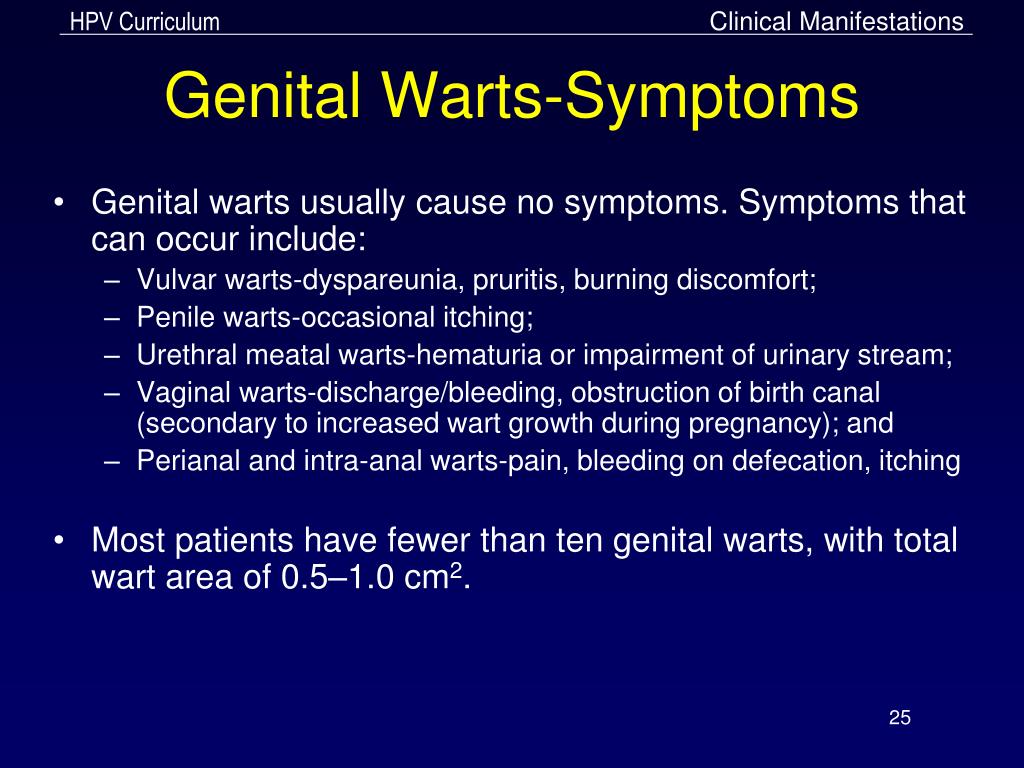 The latter are also provocateurs of the appearance of genital warts.
The latter are also provocateurs of the appearance of genital warts.
An appropriately qualified specialist will help to identify the problem, as well as get rid of it through competent treatment. You can seek advice from such a doctor at the Yuzhny clinic.
What warts look like
Outwardly, these are warty formations, located on a thin stalk and having some similarity in shape with cauliflower. The color varies from flesh to red. Appearing singly or in groups, such neoplasms can be large in size, causing significant inconvenience to a person.
Condylomas in women most often cause psychological discomfort for the reason that their formation leads to a decrease in the aesthetics of the body. In addition, large-sized warts are often touched by underwear or clothing, as a result of which they are injured. This causes discomfort while walking or intimacy. Their constant injury leads to an increase in the size of the growth up to five centimeters in diameter. Both psychological and physical inconveniences determine the mandatory nature of the treatment of genital warts. In addition, they are able to turn into malignant tumors, which carry a high health hazard.
Both psychological and physical inconveniences determine the mandatory nature of the treatment of genital warts. In addition, they are able to turn into malignant tumors, which carry a high health hazard.
Types and types
To date, two types of growths are known, differing in localization:
- anal, appearing on the perineum around the anus or in the anterior rectum;
- genital. This type of warts in men is formed on the penis, and in female patients – in the vulva or on the cervix.
In addition, there is their classification based on the morphological structure. In accordance with this feature, the following types of neoplasms are distinguished:
- spiky developing as a result of a virus of low oncogenicity. May appear on the penis in men or the labia in women, as well as in the perianal zone;
- flat formed on the vaginal walls or cervix. They appear against the background of papillomavirus types that carry a high threat in terms of transition to a cancerous tumor of a malignant nature.

Papular warts are also known, which are prone to excessive moisture. They are secondary symptoms of syphilis and have nothing to do with papillomavirus.
Causes of genital warts
Unprotected intimate relationships are the main route of transmission of papillomavirus, which provokes the appearance of genital warts, and the nature of these relationships does not matter. Also, pathology can be transmitted to children from sick mothers in the process of their passage through the birth canal.
Attention should also be paid to household routes of transmission of infection. They involve the use of personal belongings of other people, among which towels, washcloths, etc. are of particular danger.
Among the main risk factors for the formation of genital warts:
- Early onset of sexual activity.
- Unprotected intimacy characterized by promiscuity.
- Low immunity, due to which the body’s defenses are reduced.

- Stress on a frequent basis.
- Past pathologies of the organs of the reproductive system.
- Vitamin deficiency.
- Ignoring the rules of personal hygiene.
Localization
In most cases, neoplasms can be found in the area of the perineum and genital organs. For them, areas with excessive friction and moisture are most attractive, since these conditions are favorable for their appearance. In people of both sexes, growths can occur:
- in the mouth;
- in the armpit;
- in the perianal region;
- on the mucous membrane of the larynx;
- in the rectum;
- on the face.
Condylomas in women are formed on the cervix or around the vulva. If we talk about male patients, then the most common area for the appearance of neoplasms is the penis.
Warts symptoms
The key sign of the pathological process is the unpleasant appearance of the growths that have appeared. The incubation period varies depending on immunity, general health, lifestyle and other aspects. In some cases, the formations become clearly visible a week after the first contact-infection, but there are situations when it takes years.
The incubation period varies depending on immunity, general health, lifestyle and other aspects. In some cases, the formations become clearly visible a week after the first contact-infection, but there are situations when it takes years.
Among the symptoms that clearly indicate the presence of genital warts in men and women, it is worth noting the appearance of itching and burning sensation in the genital area, as well as in the area of the anal junction. These signs take place during the germination of growths. Subsequently, they may stop bothering a person.
The presence of neoplasms in women is indicated by an increase in the volume of vaginal discharge, which is whitish in color and sometimes accompanied by blood inclusions and an unpleasant odor. The presence of blood appearing with feces may also indicate the presence of growths in the anus.
Pathogenesis
The mucous membranes and cell structures of the skin are the sites of localization of the papillomavirus. This causes the absence of the problem of its transmission between people of different sexes and ages.
This causes the absence of the problem of its transmission between people of different sexes and ages.
Due to the long latent period of the course of the disease, its detection in the early stages is much more difficult. Neoplasms cannot be visually detected during this period. Activation of papillomavirus infection requires a larger number of this kind of pathogens, after which its external manifestations will appear – in the form of pointed growths.
Decreased immunity gives impetus to the progression of the papillomavirus. The process of its atypical reproduction provokes the appearance of formations. Under its influence, the growth of epithelial cells, as well as their pathogenic development, is observed. The appearance of the mucous membranes and skin changes, and as a result, single or massive growths appear.
Diagnostics
If we are talking about pointed neoplasms, then in most cases their identification does not cause difficulties. The doctor makes a diagnosis based on the clinical picture, anamnesis data and information obtained during instrumental methods of analysis.
Today, in order to identify pathology, specialists use the following diagnostic methods:
- Clinical examination . Some diseases can resemble genital warts in their symptoms. Only a qualified doctor during the examination will be able to accurately differentiate the nature of the existing problems.
- Histology .
- Immunological examination aimed at detecting antibodies to papillomavirus in human blood.
- PCR-diagnostics , which allows not only to detect the virus, but also to determine its type.
Depending on the gender of the patient, as part of the diagnosis, they also carry out:
- Colposcopy and cytology – for women.
- Urethroscopy – for men.
Ways to treat warts
The papilloma virus does not always lead to the development of the disease. As a rule, in the vast majority of cases spontaneous recovery occurs. However, if this does not happen, mandatory treatment is required.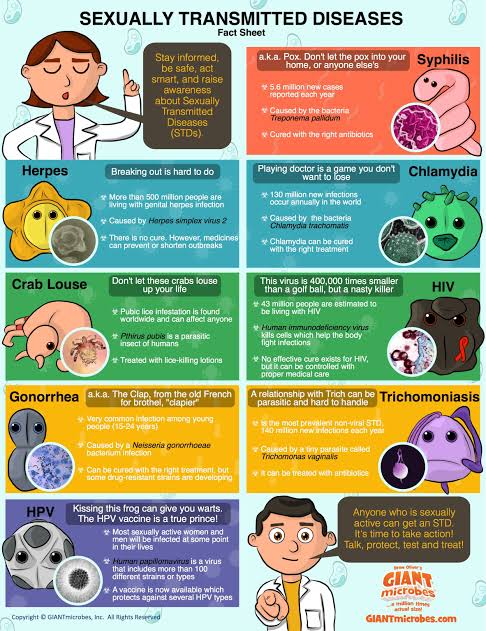 At the present stage of development of medicine, there are several ways to do it.
At the present stage of development of medicine, there are several ways to do it.
Medical
This therapeutic program involves the use of local medicines, including sprays and ointments that have an antiviral effect. A sufficiently high degree of effectiveness in the fight against growths was shown by podophyllotoxin and inquimod. During pregnancy, you can use nitric or trichloroacetic acid.
Treatment of genital warts should be phased. First you need to get rid of the formations, and after that, or in parallel with this, you should undergo therapy to reduce the number of viruses.
Deletion
Thanks to this therapeutic method, it is possible to get rid of the pathological areas where the epithelium grows. It is implemented using the following methods:
- Cryotherapy which uses extremely low boiling point liquid nitrogen to treat growths. In fact, tissue freezing occurs.
- Laser Vaporization , during which fluid is evaporated from the cells by exposure to a laser beam.
 As a result, the affected epithelial cells die.
As a result, the affected epithelial cells die. - Electrocoagulation , which can be described as cauterization of neoplasms using electric current. Under its influence, protein menstruation and the destruction of infected cells are observed.
- Surgical excision . The technique is almost never used in modern practice due to the formation of large scars.
The decision on how warts are removed in each case is made by the doctor. The basis is a number of factors, including the general state of health, the stage of development of the disease, etc.
Can warts be removed?
There are no strict contraindications regarding the removal of formations. Their elimination eliminates the risk of developing more serious diseases that pose a high threat to human health, but it is not recommended to remove warts during pregnancy. This is especially true for women up to 28 weeks of gestation. The fact is that the procedure for removing growths will become stressful for the skin, which can adversely affect the child.
Is home treatment possible?
It is possible to treat pathology on your own at home. For this purpose, the patient can use antiviral sprays and topical ointments. But it should be understood that no one can guarantee the effectiveness of such treatment. As a result, time will be lost that could be used for competent therapy, which would avoid undesirable consequences.
In order to ensure that the problem is eliminated, the treatment must be carried out under the supervision of a competent specialist. He will be able to make the correct diagnosis and prescribe adequate therapy, thanks to which it will be possible to get rid of the disease in a short time, so it is better to refuse to fight warts at home.
Which doctors should I contact for warts?
The elimination of such a problem as condylomas is within the competence of several specialists at once. They are removed by:
- Gynecologists, if the neoplasms are on the female genital organs.

- Dermatologists.
- Proctologists, for anal warts.
- Urologists, in case of localization of growths on the penis.
Possible complications
It is important to remember that refusal of treatment, or improperly administered therapy, causes the progression of the disease. As a result, the following complications develop:
- malignant tumors;
- fissures that bleed and cause pain;
- pathological processes.
Prophylaxis
A key place among all preventive measures is occupied by protected intimate contacts and sexual life with a trusted partner. This will eliminate the possibility of sexual transmission of the virus. It is recommended that people of different genders undergo laboratory diagnostics before entering into intimacy.
At the present stage of development of medicine, there are no non-specific methods that would most likely guarantee protection against the papillomavirus. It should be understood that the use of contraceptives does not provide absolute security – condoms only reduce the risk of catching an infection by 40%.
It should be understood that the use of contraceptives does not provide absolute security – condoms only reduce the risk of catching an infection by 40%.
Vaccination is considered the only option to protect yourself from papillomavirus. Virus-like bodies derived from proteins similar to viral proteins are introduced into the human body. Thanks to them, an immune response is produced. The possibility of infection due to the introduction of the drug is completely excluded. It is also recommended to increase immunity and observe the rules of personal hygiene. It is better to give up bad habits and get rid of stress.
For more information about prevention measures, as well as how to get rid of genital warts, you can get from your doctor. You can make an appointment with a competent specialist who will answer all your questions at the Yuzhny clinic.
Condylomas during pregnancy
The appearance of growths is a particularly alarming sign for women who are carrying a child. By itself, the papillomavirus in her body does not pose any threat to the fetus, however, when it is detected, it is necessary to constantly be under the supervision of a gynecologist. It is possible to remove the neoplasms that have appeared no earlier than the 28th week of gestation – an operation performed for this purpose can adversely affect the child.
By itself, the papillomavirus in her body does not pose any threat to the fetus, however, when it is detected, it is necessary to constantly be under the supervision of a gynecologist. It is possible to remove the neoplasms that have appeared no earlier than the 28th week of gestation – an operation performed for this purpose can adversely affect the child.
The formation of warts on the organs of the reproductive system of a pregnant woman increases the risk of infection of the fetus during its passage through the birth canal. Lack of therapy can cause thrush, which is associated with a number of extremely unpleasant moments. The ideal option would be a thorough examination to detect papillomavirus, which will be completed even before pregnancy. This will allow for a full treatment and get rid of problems before a new life appears in the womb.
Vaginal warts | Dikul Center
Genital warts are one of the most common types of sexually transmitted infections. Most sexually active people will be infected at least once during their lifetime with some type of human papillomavirus (HPV), which leads to the formation of genital warts.
Most sexually active people will be infected at least once during their lifetime with some type of human papillomavirus (HPV), which leads to the formation of genital warts.
Genital warts develop in the tissues of the genital organs. Outwardly, they can be small flesh-colored formations, and also look like cauliflower. In many cases, the warts are very small and may not be visible.
Certain types of HPV can cause genital warts, while others can lead to cancer. Vaccination can prevent the development of certain types of genital HPV.
Symptoms
In women, genital warts can form in the vulva. The walls of the vagina, perineum, anus, and cervix may also be affected. In men, warts can be located on the scrotum or in the anus.
In some cases, during oral sex, genital warts can affect the mouth or throat.
Signs and symptoms of genital warts include:
- Slight swelling in the genital area of various colors of flesh-colored brown or pink.

- Many warts closely spaced, may resemble cauliflower
- Itching or discomfort in the genital area
- Bleeding during intercourse
Genital warts can be flat and very small, making them invisible. But in the presence of suppressed immunity, warts can form large clusters.
Causes
Genital warts are caused by the human papillomavirus (HPV). To date, more than 40 strains of HPV have been identified that can affect the genitals.
Transmission of genital warts usually occurs through sexual contact. It is possible for a person to infect a partner without knowing they have warts, as they are often invisible.
Risk factors
Most sexually active people become infected with genital HPV sooner or later. Factors that may increase the risk of infection include:
- Unprotected sex with multiple partners
- Presence of another sexually transmitted infection
- Having sex with a partner whose sexual history is not known.

- Early onset of sexual activity
- Having a weakened immune system, such as due to HIV or drugs after an organ transplant.
Complications
Complications of HPV infection may include:
- Cancer. Cervical cancer is closely associated with genital HPV infection. Some types of HPV are also associated with cancers of the vulva, anus, penis, mouth, and throat.
- HPV infection does not always lead to cancer, but it is important for women to get regular HPV smears, especially for those who have been infected with high-risk types of HPV.
- Problems during pregnancy. In rare cases, during pregnancy, warts can grow larger, making it difficult to urinate. Warts on the walls of the vagina can prevent the stretching of the tissues of the vagina during childbirth. Large warts on the vulva or in the vagina may bleed when stretched during childbirth.
- It is extremely rare for a child born to a mother with genital warts to develop warts in the throat.
 In such cases, surgery may be required to prevent blockage of the airways.
In such cases, surgery may be required to prevent blockage of the airways.
Prevention
The main method of preventing genital warts is to reduce the number of sexual partners and use condoms every time you have sex. In recent years, vaccination during adolescence against certain strains of HPV has become widespread, which reduces the risk of developing cancer.
Diagnosis
Genital warts are easy to diagnose and can often be diagnosed by examination. In some cases, a biopsy may be required to accurately determine the diagnosis.
For women, regular gynecological examinations and Pap smears are critical to identify pathological changes in the vagina and cervix, which can be caused by both genital warts and cancer cells in the cervix.
During a Pap test, a doctor uses a speculum and a long-handled instrument to take a sample of cells from the cervix. The sample taken is sent to a laboratory for microscopic examination of cell morphology and detection of pathological changes.
Only a few strains of HPV are known to be associated with cervical cancer. Therefore, determining the type of HPV from a sample of cells that are obtained during the Pap test allows you to determine the presence of strains that cause cancer.
This test is generally recommended for women over 30 years of age, as HPV usually resolves without treatment at a young age.
Treatment
If the warts do not cause discomfort, treatment may not be required. But if there is itching, burning, and pain, or there is a fear of spreading the infection, the doctor may recommend certain treatment (medication or surgery). But given that the virus is not treated, after treatment, there are often relapses.
Medical treatment
Treatment for genital warts includes:
- Imichimod (Aldara, Cyclara). The use of this ointment increases the ability of the immune system to fight genital warts. Sexual contact should be avoided while the ointment is on the skin, as mechanical contraceptives may be damaged and it may irritate the partner’s skin.

The use of the ointment may cause reddening of the skin. In some cases, there may be side effects such as blistering or aches, or body pain, cough, rash, and fatigue.
- Podophyllin and podofilox (Condylox). Podophyllin is a solution of plant origin that allows you to destroy genital warts. The drug is applied by a doctor. At home, you can use Podofilox, which contains such an active ingredient.
Under no circumstances should Podofilox be taken orally. In addition, it is contraindicated in pregnancy. When using podofilox, side effects such as pain, skin irritation and ulceration are possible.
- Trichloroacetic acid. The use of this chemical allows you to destroy genital warts. Side effects of using this drug may include sores, mild skin irritation, or pain.
- Sinicatechins (Veregen). This ointment is usually used to treat warts in the vulva or anus. Side effects of using this ointment are minor and local in nature.

The patient should be aware that the self-administration of other drugs for the treatment of warts has a greater risk of damage to the genitals
Surgical treatment
If the warts are large and resistant to conservative treatment, surgical removal of the warts is possible. Also, removal may be necessary in pregnant women in order to reduce the risk of infection of the child during childbirth.
Surgical methods include:
- Cryotherapy (liquid nitrogen freezing). Freezing causes the wart tissue to die, a blister forms around the wart, and the warts are destroyed. New skin is formed at the site of freezing. The method of treatment can lead to tissue edema. In addition, repeated cryotherapy procedures may be required.
- Electrocoagulation. This procedure uses an electric current to destroy the warts. There may be some pain and swelling after the procedure.
- Surgical excision. The doctor can use special tools to cut out the warts.




 As a result, the affected epithelial cells die.
As a result, the affected epithelial cells die.


:max_bytes(150000):strip_icc()/genital-warts-101-582005_final-0d88c99e55394d0d8f61d1fef3077582.jpg) In such cases, surgery may be required to prevent blockage of the airways.
In such cases, surgery may be required to prevent blockage of the airways.

